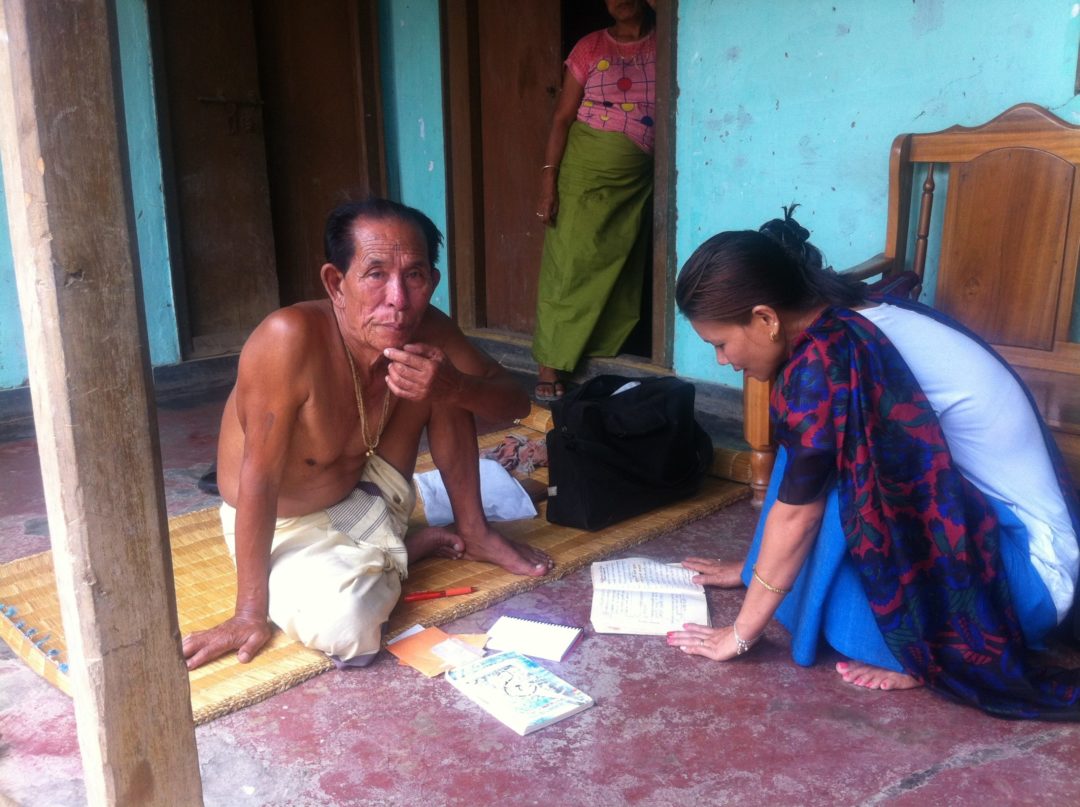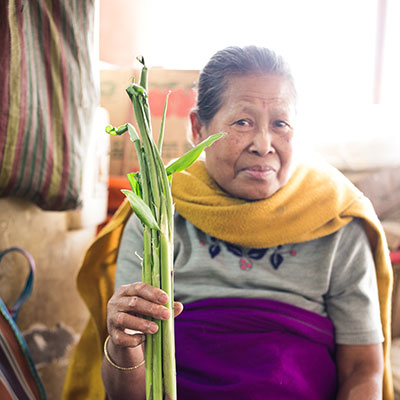THE STATE OF MANIPUR
For thousands of years Manipur was an independent sovereign state with its own language, religion, political system and cultural identity. Today it is one of India’s eight north eastern states. It covers an area of around 22,300 square kilometres, with a population of 2.8 million people.
PHYSICAL GEOGRAPHY
The valley’s main feature is Loktak Lake, the largest freshwater lake in Northeast India, which is situated about 40km south of Imphal. Famous for the phumdis, (islands of vegetation, soil and organic matter) floating on its surface, Loktak is the site of Keibul Lamjao, the only floating national park in the world. It is also the source of the Manipur (or Imphal) River, which flows southward through the valley into Myanmar.
The hill ranges of Manipur are connected by spurs and ridges, including the Naga Hills to the north, the East Manipur Hills along the Myanmar border, the Mizo and Chin hills to the south and the West Manipur Hills to the west. Average elevations vary between 1500 and 1800 metres, although the hills in the north rise to almost 3000 metres in places. In the west, the Barak River has cut a narrow steep-sided valley through the West Manipur Hills as it flows to join the Meghna River in Bangladesh.
FLORA AND FAUNA
As part of both the sub-Himalayan and Indo-Burman biodiversity hotspots, Manipur has the richest reservoir of plant life in India, supporting about 50 per cent of the country’s entire biodiversity. Natural vegetation occupies more than two-thirds of the total geographical area of the state and consists of a dizzying variety of plants ranging from short and tall grasses, reeds and bamboos, to rare flowering and aromatic plants and herbs and trees of numerous species.
Broadly, there are four types of forests: dry temperate, tropical semi-evergreen, sub-tropical pine, and tropical moist deciduous. The hills are densely covered with these mixed forests containing strands of bamboo and teak, as well as oak, pine, cane, magnolia and chinquapin. Rice and cash crops make up the main vegetation cover in the valley, as well as grassland meadows, marshes, swamps and scrub forests.
Manipur is home to an estimated 500 varieties of orchids, many of which are only found in the state. Similarly, the Siroi Lily, the state flower of Manipur, only grows at an elevation of between 1,730 and 2,590 metres.
The most famous of Manipur’s endangered animals is the Sangai or brow-antlered ‘dancing’ deer. In 1951 it was ruled extinct. Happily, a few years later, a small number were found to be living on one of the phumdis on Loktak Lake.
The only ape found in India, the hoolock gibbon, commonly occurs in all five hill districts of Manipur. Other rare primates include the slow loris, stump-tailed macaque and pig-tailed macaque. Big cats including tiger, clouded leopard and the golden cat are extremely rare, although still found in remote parts of the state. Leopards are more widespread. Elephants make seasonal migration into the state in the Indo-Myanmar border areas and also the western parts from Assam.
The Himalayan Black Bear is another protected animal that occurs all over the hills of Manipur. The rare and elusive Malayan Sun Bear is restricted to the forests in the Indo-Myanmar border areas and the Yaingangpokpi Lokchao Wildlife Sanctuary. This animal resembles a Black Bear, except it is smaller and can climb trees with the agility of a monkey.
Land monitor lizards, python, cobra, vipers and tortoise are some of the more common reptiles found in Manipur. Other rare or rarely sighted animals include the pangolin, the binturong (or bearcat), the spotted linsang, the smooth Indian otter, the hog badger and ferret badger, and the Malayan giant squirrel. Many of these animals are endangered species, living a precarious existence in the forests of Manipur due to encroaching human activity.
A variety of rare birds occur in and around Loktak Lake – primarily smaller reed-dwelling species. Waterfowl are becoming a rarer sight due to the reduction of open waters. The hooded crane, the black eagle and the shaheen falcon are also diminishing. The eastern white stork, bamboo partridge, green peafowl and a variety of hornbills are more common sights. The state bird of Manipur, Mrs Hume’s Pheasant, locally known as the Nongin, is boldly patterned with a long barred tail. The ease with which it can be trapped has been a major cause of its decline.
CLIMATE
During the summer months the maximum temperature is around 32C. In winter the temperature often falls to zero. The hilly regions occasionally experience snow fall. The rainy season is April through mid-October. The monsoon varies from light rainfall to heavy showers and the state receives an annual rainfall of about 1500mm.
BONE AND BODY CLINIC AND TRAINING CENTRE, MANIPUR
BONE AND BODY CLINIC AND TRAINING CENTRE, MANIPUR
SUPPORT OUR WORK
DONATE
Make a one-time donation or sign-up to donate an amount each month. You can choose to support the new Manipur centre or help the entire organisation and the work we do.
GET INVOLVED
We rely on people like you to help make the BBRC’s work a success. There are lots of ways you can get involved and support us.
IMA TALES
“The worth of a civilization can be judged by the place given to women in the society" K.S. Bhalla
The women (or Ima) of Manipur play a central role in the social, cultural and political life of local communities. In ‘Ima Tales’ we will share some of the Manipuri women’s homegrown wisdom, bringing you stories about the traditional remedies, recipes and other indigenous practices that make Manipur such a distinctive place. Click here to find out more…



